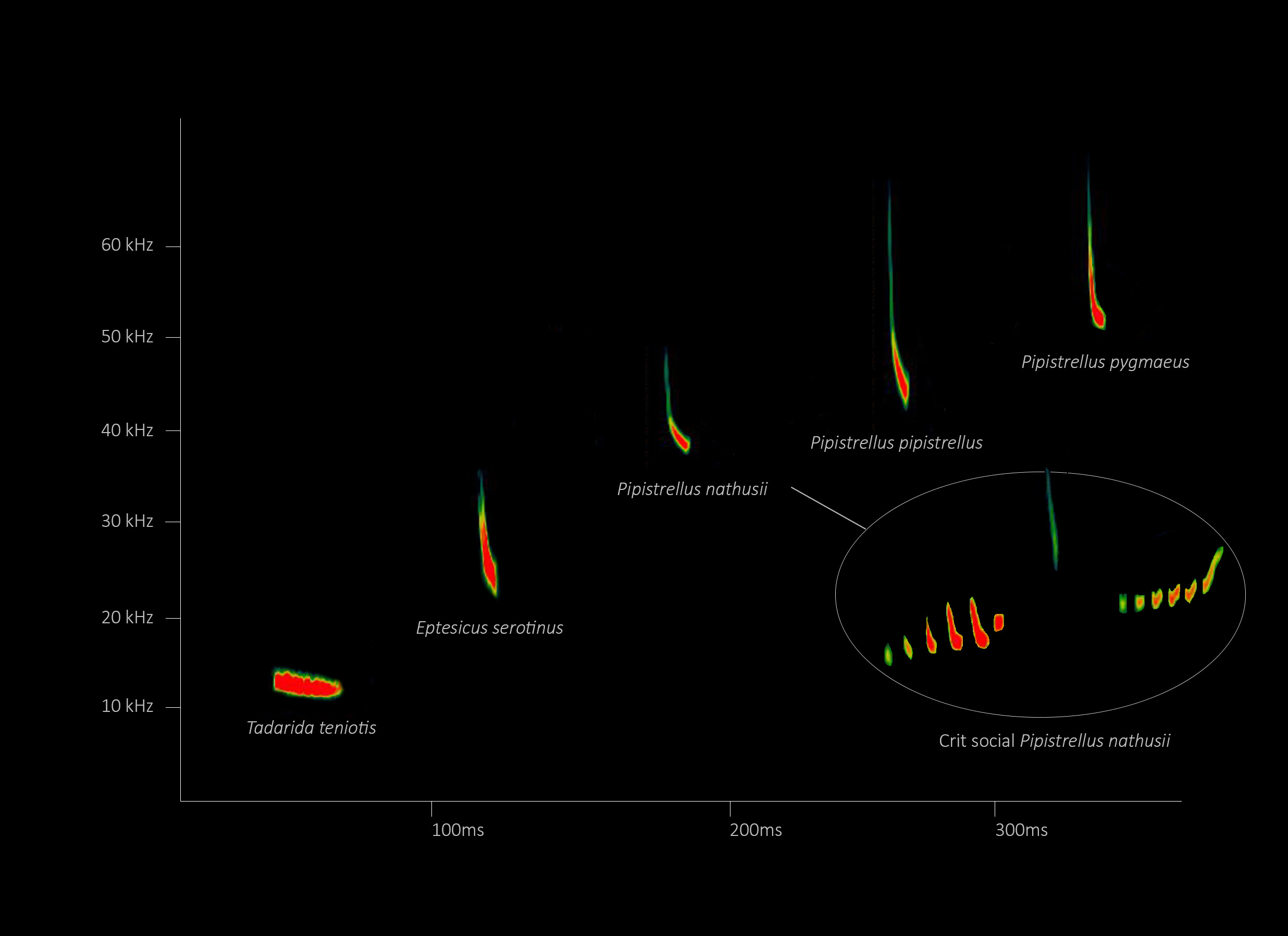Bioacoustics Monitoring Group
Monitoring of bat species and phonic groups in their foraging habitats using bioacoustics.
Bioacoustics allows us to obtain information about habitat use of different bat species. Even if not all species can be identified at species level, different phonic groups (groupings of species with similar ecolocation calls) have proven to be good bioindicators of different habitat types.
The Bioacoustics Monitoring Group establishes fixed ultrasound recording stations in a wide diversity of habitats. This way, apart of establishing population trends for some species, it is also possible to detect changes in habitat use by bats in general. The species for which trends can be obtained are: the common pipistrelle (Pipistrellus pipistrellus), the Savi's pipistrelle (Hypsugo savii), the barbastelle (Barbastella barbastellus), the greter horseshoe bat (Rhinolophus ferrumequinum), the Mediterranean horseshoe bat (Rhinolophus euryale) and the lesser horseshoe bat (Rhinolophus hipposideros).

Instructions
The method is exactly the same used in the ChiroHabitats protocol, even if the sampling is more intensive and must be mantained constantly over time. Considerations and instructions:
- Choose a Site in a TERRESTRIAL HABITAT (avoid rivers, ponds, lakes and other water bodies).
- Sample as much in the middle as possible of a considerable extension of the habitat, avoiding ecotone areas (limits between two habitat types).
- Conduct a ChiroHabitats Session between the 10th-20th of each month.
- Take 7 photos of the sampling site every season of the year: of the Audiomoth, the four cardinal points, the floor and the sky.
- YOU SHOULD NOT ANALYZE THE FILES PRE-CLASSIFIED AS PIPISTRELLUS.
- Some interesting habitats: cork oak forests, riverine forests, shrublands, beech forests and deciduous forests in general.
- Doubts about acoustic identification: https://ratpenats-org.slack.com/archives/C044LJHFDUG.
If you find an area near your home that you are interested in sampling and want to participate, contact us through info@ratpenats.org
Habitats per square: 1 2 3 4+